Volvo S90 Becomes Instantly Elite Sedan
Filed under: Equinox, Features, Autos
By John Gilbert
ESTEPONA, Spain — A year ago Volvo replaced its aging XC90 with an entirely new SUV that ran the table of SUV-of-the-year awards. Bolstered by proper financing from its Chinese owners, plus a new plant in China and a planned one in the U.S., the iconic little Swedish company has grown far beyond its home in Gothenburg.
Only a few months after the consensus proclaimed the XC90 as perhaps the finest SUV ever built, we find ourselves searching for superlatives again, this time about where the all-new S90 plugs in among the hotly contested luxury sedan segment.
Competition includes such luminaries as BMW 5-Series, Audi A6, Mercedes E-Class, Lexus GS or LS, Acura RLX, Infiniti Q70, Jaguar XF or XJ, and Porsche Panamera. After only brief driving stints in the new S90, there seems no question it can compete with all of those established stars in performance, features and spacious comfort, and the new Volvo is unexcelled when it comes to safety, of course, and maybe also to technology.
Despite the acclaim given the XC90, Volvo knows the auto media is filled with cynics, so nothing was left to chance when the time came to introduce its all-new S90 sedan. Volvo summoned selected auto journalists to Spain, and more precisely to the Spanish Riviera. My thought is the cynics must have stayed home, because everybody I talked to was as impressed as I was about the new car.
Volvo designers took the XC90 — their “Swedish Sanctuary” — and lowered it down to sedan size, keeping the new signature grille and nose, but wrapping the same superb platform in a stylish shape with pleasing contours. It looks absolutely nothing like any previous-generation Volvo sedan, but retains a familial appearance with the XC90, while further establishing the corporation’s new direction for style.
Officially, the S90 replaces the outgoing S80 in Volvo’s lineup. A V90 station wagon accompanies the S90, with smooth lines on what is, surprisingly, 3 inches shorter than the sedan. Read more
Pacifica Can Handle All Family Tasks
Filed under: Equinox, Features, Autos
John Gilbert
LAGUNA BEACH, Ca.—The rich memories of my childhood include our family drives, usually on Sunday afternoons, in the rural areas north of Duluth, Minnesota. From the back seat of our black, 1951 DeSoto sedan, my sister and I would join my mom and dad playing word games, usually picking some everyday object and trying to prevent the rest of the family from identifying it. While asking for clues, the common starter was: “Is it bigger than a breadbox?”
There’s no time for family drives anymore, it seems, and our own two sons are adults, growing up before current electronic connectivity, videos and smartphones replaced guessing games. And what the heck is a breadbox, anyway?
Chrysler LLC has done its best to recapture that nostalgic era of family drives and possibly rekindle the demand for the family utility of minivans when it introduced the 2017 Pacifica, a totally renovated version of its once and present — and maybe future — premier family hauler. The Pacifica is Chrysler’s new minivan, a vehicle which might best be described as the automotive version of a breadbox; it stores people the way breadboxes used to store assorted loaves of fresh-baked bread.
Alfa Romeo Doesn’t Spare Theatrics for New Giulia
Filed under: Equinox, Features, Autos
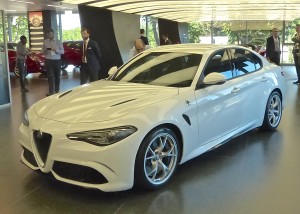
Alfa Romeo unveiled the new Giulia midsize sedan as the focal point of its return to competitiveness.
By John Gilbert
MILAN, Italy — When Italians decide to do something, they tend to do it wearing their emotions on their sleeves. Or at least their fenders. That unrestrained optimism accompanied the world introduction of the new Alfa Romeo Giulia, a sport-luxury sedan that is a perfect example of living up to the hyperbole accompanying that legendary Italian passion.
There is no argument about how important the new Giulia sedan is to “resurrect” Alfa Romeo, just as there is no way to overstate the importance a healthy Alfa Romeo can have for Fiat, and therefore Fiat-Chrysler Automotives, on the world automotive stage. As a midsize sedan, the Giulia is not shooting at Accord, Camry, Fusion, Malibu type sedans. It is aimed directly at the top German performance sedans, such as the BMW M3, the Mercedes AMGs and the Audi S4.
In order to run with, and ahead, of such luminary competitors, governing FCA built an entirely new platform and an entirely new 3-liter V6 with Ferrari engineering. While similar to a Ferrari designed engine used by Maserati in the Ghibli sedan, some media types assume that is the Giulia engine — a point Alfa officials refuted almost to the point of confrontation. We will believe that the Giulia V6 is all new.
Alfa built the mid-size sedan in almost total secrecy, engaging what it calls a “skunk-works” of devoted and single-minded engineers to design and build the car. That term dates back to World War II, when Alfa engineers wanted to hide their latest prize from the Fascist Italian government, and joined the secret Lockheed project to develop the F80 Shooting Star jet fighter that helped hasten the end of the war.
For the Giulia introduction, Alfa summoned several hundred automotive journalists from all over the world to come to Milano where the car shared the spotlight with the opening of the Alfa Romeo museum, with its display of hundreds of vehicles that trace the 105-year history of Alfa car-building.
In the museum’s auditorium, Alfa Romeo president Harald Hester started the show, followed by chief engineer Philippe Krief, and design chief Lorenzo Ramaciotti. When Ramaciotti talked about the passion that is an Italian hallmark, he mentioned how it is similar to Italian classical music, such as that performed by brilliant tenor Andrea Bocelli. At that moment, Bocelli was escorted onstage. He read a love poem he had written, and then he sang “Nessun Dorma,” and when he hit the operatic crescendo, a stunning red Giulia sedan was driven out on the stage behind him.
Theatric overkill? More like colorful Italian tradition.
Sergio Marchione, chairman of Fiat Chrysler Auto, was next at the podium. “Over two years, we developed a quintessential example of all that made Alfa Romeo a car coveted by passionate drivers the world over,” said Marchione. With 510 horsepower and 0-100 [kilometers] acceleration in 3.9 seconds, we have created a car that has no need to be compared to others.
“This is one of the most impressive cars I’ve ever been associated with,” Marchione added, noting that the “skunks” at the skunk-works were able to think outside the box, starting with a clean sheet of paper, and “unimprisoned by barriers we sometimes build for ourselves.”
It’s easy to see why Marchione is the head man at Fiat Chrysler Auto, which includes all things Fiat, Alfa, Ferrari, Maserati, Lancia, Chrysler, Dodge, Ram and Jeep. Fiat returned to the U.S. only after the parent company took over the faltering Chrysler LLC, and is just now reintroducing Alfa Romeo to the U.S. Those old enough to remember might best recall Alfa for the sleek little roadster Dustin Hoffman drove to try to interrupt Katherine Ross’s wedding in the timeless movie, “The Graduate.”

Familiar triangular Alfa center point on the grille links thoroughly modern Giulia with historic past.
While Alfa has slipped in popularity, almost to extinction, its heritage has remained strong, and new models like the 4C sports car and the Giulia are just the beginning of the planned resurrection.
“Alfa Romeo has a legendary place in automotives,” Marchione added. “It has so many admirers throughout the world, but it has not been reflected in commercial success. Other than Ferrari, and maybe Jeep, I don’t know of any other car capable of expanding so much of its core tradition.”
We couldn’t drive the cars, yet, so we had to be satisfied with their stunning appearance, and the deft descriptions by Alfa executives. Hester opened the program describing the uniqueness of the brand and said, “Making and creating are not the same thing. We wanted to create something different, to put the driver back at center stage. An Alfa Romeo is never just a car, just a machine. It is beyond the scope of being just a machine.”
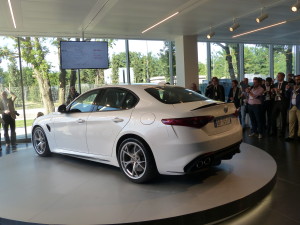
All the sleek lines reach a harmonious conclusion at the rear of the Giulia, which takes aim at the BMW M3.
Chief engineer Krief explained the rear-wheel or all-wheel platform, housing the all-aluminum 6-cylinder bi-turbo engine, featuring Ferrari technology and engineering skill. “Turbo lag is nonexistent, and it has excellent torque at all RPMs,” Krief said. “It also has cylinder deactivation, and Alfa invented that technology in the early-‘80s. We then worked to get the engine to sing, as it should. The Giulia has 50-50 weight distribution, and our level of driving enjoyment depends on the suspension, which has ‘Alfa Link’ at the rear for maximum movement control, and double wishbone in front with a new steering system that is the most direct on the market. It has carbon ceramic brakes, and the best torsional rigidity in its class.
“Electronics are used to increase performance, not cover up shortcomings, and it has real torque-vectoring, with a double clutch system to separate the torque going to each wheel. Rear-wheel drive can be a problem on slippery roads, which is why we also offer all-wheel drive. The response is quick and it has the lowest coefficient of drag in the segment, with a front aero splitter, so it is safe to drive, even at very high speed.”
The interior is filled with classic features, real wood and real leather surrounding everything, including a console that has two round knobs. The left knob is smaller, thankfully, and it directs the driver to N, A, D, and Race. The N is for normal operation, the A is for Advanced, the D for Dynamic — which is more advanced — and the Race is for a full-out race-smooth performance setting. That control governs the direct-sequential gearbox as well as the suspension firmness and the amount of effort necessary to send the Giulia down the road.
Design chief Ramaciotti said the organically shaped car “challenges time, passion and space with its tension — part of the culture at Alfa Romeo. The short overhangs, long wheelbase, compact body, and simplicity” is the feature of the exterior, with its Alfa-emblem nose and elegant silhouette. Inside, he said, “all you see is leather, wood and carbon fiber. The whole package is a coveted object of desire, not an ornament.”
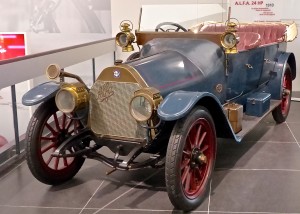
Alfa takes great pride in building passionate cars, starting with the first one, this 1910 museum piece.
Marchione said FCA plans a rapid expansion for Alfa, which reportedly includes a crossover SUV/van, a larger sedan, and enough other models to sell 400,000 vehicles worldwide by 2018. The museum, filled with classic vehicles dating from the 1910 model and on up to the current era, including 1937 and ’38 Giulia and Giulietta models, and a Gran Primo race car that had two Ferrari V12 engines — one in front and one behind the cockpit.
“It will be easy to rediscover Alfa Romeo’s identity,” said Marchione, “because Alfa has lived through, and often written, so much history.”
Discovery Sport Too Cool for Iceland
Filed under: Equinox, Features, Autos
By John Gilbert
REYKJAVIK, Iceland
Often when you take a trip, the proper cliche is “getting there is half the fun.”
Not this time. When Land Rover invited auto journalists for a first test-drive of its new Discovery Sport, it chose Iceland. Maybe I was the only person in snowy and icy Minnesota to be excited about making a January trip to snowy and icy Iceland, but being there was ALL the fun. Only a weather-delayed flight proved disappointing, compressing my group’s time from three days to two.
To be the trip’s prime attraction, the Discovery had to compete with amazing visual sights that included primitive roadways, a lack of traffic, towns, and alternative routes. There was not a lot of snow, and, by the way, not a single day from January through March passed when Reykjavik didn’t have warmer temperatures than Duluth, Minnesota.
After finally arriving in Iceland’s main city, where about three-fourths of the country’s less-than half-million people reside, we checked in at the Design Hotel 101 in downtown Reykjavik, but didn’t have time to unpack. We were fitted with “66-degreeNorth” down jackets, gloves, hats, and other severe-weather-beating apparel, just in case, and then we were off to the product presentation. Promptly, we hit the road for the designated circuit of several hundred miles on mostly narrow, 2- lane roads that passed by mountains, volcanos, hot-spring pools, and terrain that includes tectonic plates, which shift every year and are gradually splitting Iceland in a equally toward North America on the west and Scandinavia on the east.
At one point, we seemed to be bunched up, caravan-style, at an outpost. A Land Rover guide explained the fissure between tectonic plates that are causing gradual continental split dividing Iceland. He added that the roadway ahead was clear, and with studded tires mounted, we should try to pick up the pace to 60 miles per hour or so. Easily done.
The ideal way to tour the rugged countryside proved to be the Discovery Sport. It is the entry-level compact SUV from Land Rover, a British company that builds larger and more luxurious engineering marvels under the names Range Rover, Evoque, Defender, LR-4, and previously the LR-2, which will be supplanted by the Discovery.
The company, formerly owned by Ford, is now owned along with Jaguar by Tata Motors in India. But it’s never lost its identity, nor its pride in building the most capable off-road vehicles without ever compromising on comfort, safety and luxury.With the top Range Rovers listing for nearly $150,000, it is impressive to see how the company combines all those standards into a Land Rover Discovery that starts out at $38,000. Regardless of price or perceived stature, the Discovery Sport over-achieved in every way, no matter how desolate the roadways.
At another outpost, we were ordered to turn left, down a bank toward the Hvita River, rushing along between the rare connection of two parallel roads. We were crossing, hood-deep in rushing, chilly water, to prove the Discovery Sport’s 24-inch wading capability. No problem.
As vehicle program director for Discovery 4, Paul Cleaver has been with the car since the first sketches and clay models. “I’ve taken it from the early concept stage with designers, to production,” said Cleaver. “It’s absolutely like giving birth. The proudest moment of my life was the birth of my son, Archie, and the second proudest is the birth of this Discovery Sport.”
Tata is based in India, but it has left Land Rover, and cousin Jaguar, with well-financed backing to stay in England. “This is the entry level Land Rover product. This is a lot smaller than the LR-4, but the space in the interior shows the team has done a fantastic job of versatility,” said Cleaver. “The third row and the sliding second row are class-leading. I think we’re the best now at making the exterior compact but having a large interior space.”
The class-leading interior volume includes a second row that slides 6.3 inches, and reclines. There is 27.8 cubic feet of storage behind the third seat, or 31.75 cubic feet with the third seat folded, or up to 60 cubic feet with both seats folded.
The Discovery Sport has permanent all-wheel drive, and, Cleaver explained, Land Rover has engineered a new rear suspension system to strike a balance between on-road dynamics and off-road capability, yet still provide the driver with all sorts of comfort. Designed from scratch, the rear suspension has a unique integral link and an aluminium lower control arm.
For a powertrain, Land Rover borrowed from its more-luxurious brother, the Evoque, and uses the same 2.0-liter turbocharged 4-cylinder engine which came from Ford, Land Rover’s previous owner. It develops 240 horsepower, and its 9-speed ZF automatic transmission is at its best swapping gears for optimum ratios mid-range, with top gear designed for highway cruising, and first gear aimed at serious off-roading. The Discovery Sport will hit a 125-mph top speed, and still deliver 28 miles per gallon highway, with an EPA estimated 23 mpg combined city-highway.
Structurally, Discovery Sport also borrowed from the Range Rover Evoque, using a steel monococque body, with aluminum — “aluminium” to the Brits — in selected areas, such as the bonnet (hood), roof, and tailgate, and magnesium cross beams are used for strength and reduced weight, compared to the high-strength and ultra-high-strength steel of the rest of the structure.
Before I ever laid eyes on the Discovery Sport, the trip was certainly an adventure. It was going to be long, flying from Duluth, MN., to Minneapolis, then to Toronto, from where I would board an IcelandAir flight to Reykjavik. It got suddenly longer when I was contacted by Land Rover officials who said the trip would be delayed because a winter storm would prevent any aircraft from landing in Iceland for 24 hours. Everybody else in my group was connecting through Boston, so I was alone camping out in the Toronto Airport Sheraton’s fine accommodations, because the one-flight-per-day trip to Iceland wouldn’t depart until 7:30 p.m. the following day. I envisioned a snowstorm that only a Minnesotan might appreciate burying Iceland, but it turned out there was very little snow — just winds blowing at up to 100 miles per hour from west to east across Iceland, eliminating any possibility of seeing across the country, much less landing from the sky.
Once on the road, I was surprised we saw no wildlife, and I asked a resident if there was any. “Horses,” he said. I told him back in Minnesota, we didn’t refer to fenced-in horses as wildlife. “And some foxes and mink,” he added. We never saw any, but, whatever, the lack of traffic and wildlife was offset by breathtaking scenery, everywhere we looked.
We paused at another road-side stop, where another Land Rover guide in another aging but beautiful Range Rover Defender awaited us. Ahead, off to the left in the fading sunlight, was a magnificent white mountain peak. “That’s the Baula Volcano,” he said. “It’s so well-known that the road you’re on is called Volcano Road.”
The models we test-drove were all loaded up with features, and were priced at about $45,000. The HSE Luxury Pack includes expansive sunroofs, an 8-inch nav and information screen that rivals an iPad in size, and with surprisingly adequate three-row seating inside that compact silhouette. Stadium seating means those in the second row sit an inch or so higher than row 1, and row 3 sits higher than row 2, aiding visibility for the occupants. Flip a switch and the second row folds down electronically. There are seven USB charging sites, taking care of everyone, even if you squeeze in seven occupants.
The Discovery Sport proved more than worthy, even when I gave it that special test beyond anything Land Rover folks might have imagined. The experience gave me a better idea than even Paul Cleaver had about how stable and responsive their new vehicle is. Sophisticated electronic aids work seamlessly. The HDC driving command computer responds to a pitch-rate sensor that detects corners and reduces speed without driver intervention. The terrain response system has push-button control of four modes: general driving, mud and ruts, sand, and snow and ice, and also affects the electric power-assisted steering. The mode shown on the screen notes DFC or HDC, where the powertrain is directing its torque, and which direction the front wheels are pointed, which is vital in off-road driving.
Late in the drive, I was approaching a small rise on Hwy. 1, Volcano Road, going about 60 on a clear road, and I hit the rear window washer and wiper. I glanced in the rear-view mirror for a millisecond to see that the window was cleaned sufficiently, and looked back ahead. To my horror, the unmarked road atop the small rise looked a lot like a skating rink. Solid glare ice. Worse, there was an unmarked “T” intersection 100 feet ahead. I yelled to my partner: “Hang on! This isn’t going to be pretty!” Without question, I was going too fast to make the 90-degree turn, studded tires or not, but I stabbed the brake pedal hard, and edged left hoping the slightly dished left edge might help convince a tire to make the turn. It didn’t. Our Discovery Sport skidded sideways, crossed the intersection, and went almost gently right off the road. My instincts from scaling Duluth’s cliffside avenues took over, and as we settled off the intended road, I hit the gas. The responsive turbo churned straight ahead, until I could pull the steering wheel left. Amazingly, we simply climbed back up onto the road — and kept going! No damage, no break in schedule.
“Going from the clay modeling in the studio, with all the different concepts and schemes, and taking it through to production, has really been exciting,” said Cleaver, the product manager who has been with Land Rover for 20 years. “Now, to see the cars rolling around Iceland, it makes the hair stand on the back of my neck.”
Imagine if he had been riding with us!
A.L. All-Stars Provide Perfect Ending
Filed under: Features, Sports
By John Gilbert
MINNEAPOLIS, MN. — All the pregame ceremonies worked well, from the celebrity softball game, the rain-delayed Home Run Derby, the Minneapolis Convention Center’s Fan Fest, the pregame flyover by the six-fighter-jet formation of the Air Force Thunderbirds, who had prepped for the job by parking at the Duluth Airport. Rod Carew threw the ceremonial first pitch, and a stirring version of Bob Dylan’s “Forever Young” preceded the Canadian and American national anthems.
But all of the pre-game buildup was just preliminary to the main event — the Major League Baseball All-Star game.
Everything worked out to perfection for the 41,048 fans at Target Field, where weeklong scares that Minneapolis would face its coldest July 15 in history dissolved in sunny, 72-degree perfection. It was still about 65 when the American League finished beating the National League 5-3, which secured home-field advantage for the designated-hitter league in the World Series.
The mob of media, however, always looking for a controversial angle, embarrassed itself by making one up. The idea that National League starter Adam Wainright might have purposely tossed an easy pitch to leadoff man Derek Jeter, in fact, became a national controversy that overshadowed the game itself.
Everybody paid tribute to Jeter, the retiring New York Yankees icon, who started at shortstop for the American League and led off the batting order. In the top of the first inning National League leadoff man Andrew McCutcheon smacked a hard ground ball toward center field, but Jeter raced to his left, dived to spear the ball in his glove, then got up and threw to first. Now it wasn’t a bullet throw, like Jeter might have fired five years ago, but it was accurate. In a very close play, McCutcheon was called safe, although the American League escaped any damage.
In the last of the first, 6-foot-7 St. Louis ace Adam Wainright overthrew a fast ball that was too fast, obviously fueled by the adrenaline of the moment, and it bounced before getting to the plate. Wainright came back with what looked like another fastball but was later described as a “90-mph cutter,” or cut fastball. It was on the outside part of the plate, and while it almost got by Jeter, his late swing sent it up the right field line, where it ricocheted through the corner for a double.
That sparked a 3-run American League first inning, and the media almost immediately caught up to Wainright, who said, he intended to “pipe a couple” to Jeter. The media frenzied, claiming that Wainright said he was going to groove some pitches for Jeter to hit, as a tribute. Wainright tried to counter the impression later, saying if he knew Jeter was going to hit a double, he would have changed plans. It wound up being the lead item on the game on ESPN, on local newscasts, and in major columns in newspapers. Wainright was accused of hurting the integrity of the game by trying to set up Jeter.
For anyone who has played the game, and especially for anyone who has pitched, the whole controversy is contrived by media who were all looking for a unique twist. Wainright is a fastball pitcher, and one of the beauties of the All-Star Game is that a pitcher will try his strength against the strength of a prized opponent. The media who say Wainright set Jeter up apparently watched too much of Monday night’s home-run contest, wherein pitchers selected by the hitters lob perfect deliveries to help the batters hit as many home runs as possible. If Jeter, one of the game’s greatest hitters, was being set up, how come he barely got around on Wainright’s fastball? Why didn’t he pull it to left?
Anyone who has played knows there are times when a hitter might “go the other way” by punching an outside pitch to right to advance a runner to third; there are other times when a fast pitch almost gets by a hitter, whose late reaction is just in time to hit the ball to the opposite field. This was a case of “B.”
From the pitcher’s point of view, if there is anything more exhilarating than throwing a fastball by a hitter, it’s throwing a fastball by a great hitter for a strike. If Wainright said he wanted to “pipe” a pitch or two to Jeter, I’ll guarantee you he meant he wanted to throw a hard strike past Jeter.
In fact, Mike Trout of the Angels, the best hitter currently in baseball, was next up and slammed a Wainright pitch off the wall in right center, as Yasiel Puig jumped high for a near miss. The ball caromed back toward the infield as Trout circled the bases. Good as he is, Trout also was a little late on a Wainright fastball, but nobody suggested that pitch was “piped.” After striking out Robinson Cano, Wainright also didn’t groove the pitch to Miguel Cabrera, who hit an absolute missile into the left-field seats for a 2-run home run and a 3-0 first-inning lead. The blast barely cleared the fence, but if the grandstand hadn’t been there, that ball might still be flying.
Beyond that, all the storybook stories that had been foretold came true at game time. Jeter added a single in his second time up, before being ceremoniously replaced in the field to prolonged ovations. Trout, the Angels monster talent who is seen as the likeliest player to supplant Jeter as baseball’s primary ambassador, not only tripled, but also hit a double to drive in a later run, and wound up as the game’s most valuable player, which meant he got to choose between Chevrolet’s 2014 car and truck of the year: The Chevrolet Corvette and a new Chevrolet Silverado pickup truck. Big Mike chose the Corvette Sting Ray.
The other big story lines included the local guys. Twins closer Glen Perkins made his first All-Star team in 2013, but when the game ended, he was in the bullpen, the only player who didn’t get in the game. He had another chance this time, and new Twins catcher Kurt Suzuki was also a spare on the A.L. team. Sure enough, when the Americans held their 5-3 lead in the top of the ninth, the big crowd roared when Perkins came jogging in from the bullpen. American League manager John Farrell of the Boston Red Sox made a great move when he also inserted Suzuki as the last-inning catcher. Bing, bang, boom, Perkins induced a fly to center, struck out Josh Harrington, and ended the game with a harmless grounder to second. Perfect save for the hometown, and home team, closer.
Perkins fared better than Pat Neshek, the submarine-throwing reliever released by the Twins when he had some problems in 2010. After a couple other failures, and the tragic death of his new baby, Neshek toyed with leaving the game. But he and his wife Stephanie had a new baby, just as Neshek picked up the pieces this year in the unlikely location of St. Louis, where the Cardinals are pitching rich. Neshek worked his way to the position of set-up man, which means he pitches an inning or two of relief to pave the way for the closer to finish off foes. Neshek is 4-0 and hasn’t allowed an earned run since sometime in April. With a few scratches on the National League pitching staff, Neshek was a late addition to the staff.
When Neshek, a Brooklyn Park native and former Park Center high school star, came in for the N.L. in the fifth inning of the All-Star game, the crowd gave him an appreciative ovation, even though the Nationals had just tied the game 3-3. Neshek was greeted by a flurry of unfortunate singles, and didn’t survive the inning, yielding two runs — the difference in the game.
Even then, there were enough big hits, great defensive plays, strong pitching, and quality play from the well-known starters through the little-known subs to make it a very entertaining All-Star Game.
On the National League side, Milwaukee’s impact was impressive. Third baseman Aramis Ramirez led off the second with a single, and after Chase Utley doubled home a run, Brewers catcher Jonathan Lucroy doubled home another run to make it a 3-2 game. It became 3-3 in the fourth when Utley was hit by a pitch and Lucroy hit another double to drive him in. The whole show was a lot of fun, very entertaining, and not only put Target Field on the map among Major League visitors, but gave Minneapolis the chance to show off all its great restaurants and hospitality features.



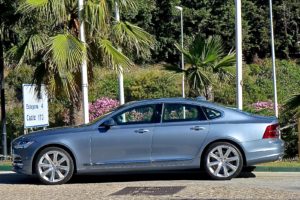
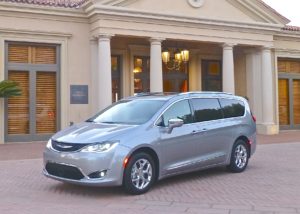


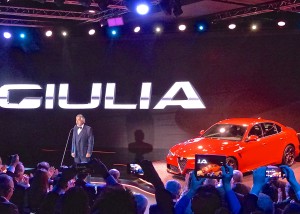
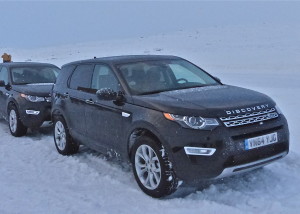
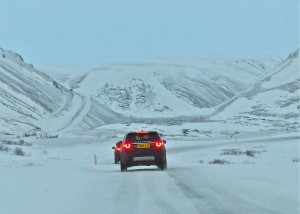
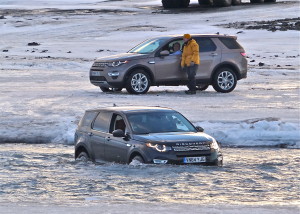
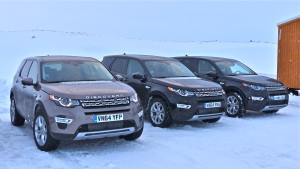

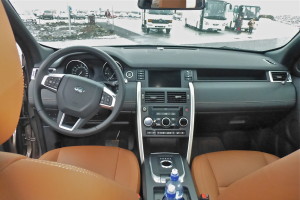



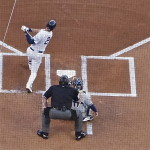

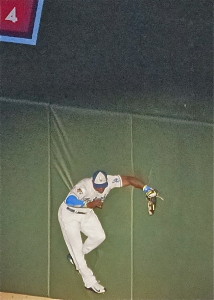

 John Gilbert is a lifetime Minnesotan and career journalist, specializing in cars and sports during and since spending 30 years at the Minneapolis Tribune, now the Star Tribune. More recently, he has continued translating the high-tech world of autos and sharing his passionate insights as a freelance writer/photographer/broadcaster. A member of the prestigious North American Car and Truck of the Year jury since 1993. John can be heard Monday-Friday from 9-11am on 610 KDAL(www.kdal610.com) on the "John Gilbert Show," and writes a column in the Duluth Reader.
John Gilbert is a lifetime Minnesotan and career journalist, specializing in cars and sports during and since spending 30 years at the Minneapolis Tribune, now the Star Tribune. More recently, he has continued translating the high-tech world of autos and sharing his passionate insights as a freelance writer/photographer/broadcaster. A member of the prestigious North American Car and Truck of the Year jury since 1993. John can be heard Monday-Friday from 9-11am on 610 KDAL(www.kdal610.com) on the "John Gilbert Show," and writes a column in the Duluth Reader.